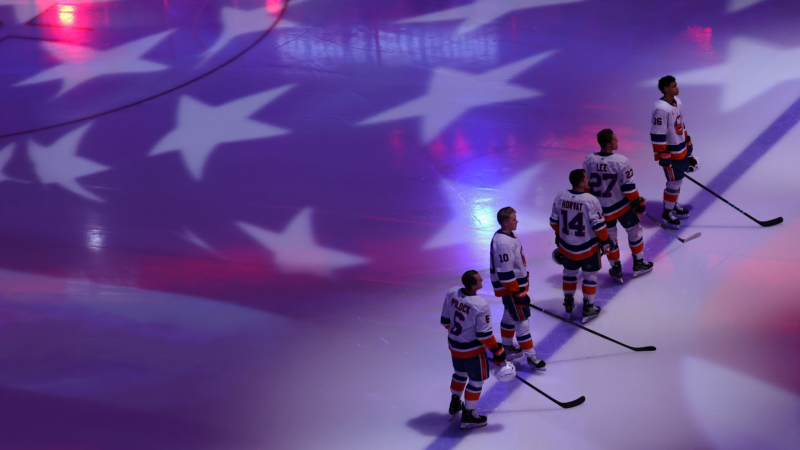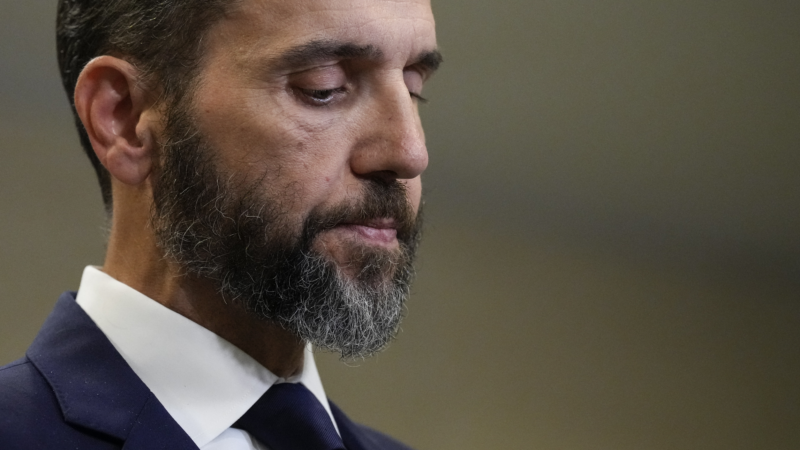Longer careers in ice hockey are linked to a greater risk of CTE, a new study finds
For years as the link between American football and the degenerative neurological disease known as CTE has come into focus, research on other sports had lagged behind, even for contact sports like ice hockey.
Now, a new study from researchers at Boston University is the largest yet to establish a relationship between an athlete’s odds of developing CTE and the length of their career in ice hockey, its authors say: the longer he played, the more likely he was to have the disease.
The study, published Tuesday in the journal JAMA Neurology, examined the brains of 77 deceased male ice hockey players, whose experience in the sport ranged from youth hockey through professional play. CTE can only be diagnosed with an autopsy of the brain, meaning it can only be detected after death.
In total, more than half of the hockey players studied were found to have CTE. And the incidence of CTE rose depending on how long the player’s career lasted: All but one of the former professional players — 27 of 28 in total, and 18 of 19 who played in the National Hockey League — showed signs of CTE, compared to under half of those who had played at the college, juniors and semi-professional levels. Of the donors whose hockey careers were limited to youth or high school hockey, researchers found CTE in only 10% of samples.

“We know less when it comes to hockey,” said Dr. Jesse Mez, a professor of neurology at Boston University and a co-author on the study. “Most of what we’ve learned has been in the football space, because most of our brain donors have been football players.”
As in other CTE studies, researchers relied on samples that had been donated. Players who played at elite levels are overrepresented in the sample, Mez said. And selection bias is likely, as players and families who arranged to donate brains to researchers may have noticed symptoms associated with CTE before death, such as mood swings, memory issues or headaches.
“That suggests we’re going to have more people with CTE in the brain bank than we would in the generation population,” he said. “That being said, when you’re finding it in just about all of the NHL players in the brain bank, it is still very concerning.”
What the study does not establish is how likely a hockey player is to develop CTE. “With each additional year played, the risk increases,” Mez said. “But we don’t know what the absolute risk is for a given amount of play in the generation population.”
Over the past 15 years, as awareness of the danger of head impacts has grown, all levels of organized hockey have taken steps to reduce the risk.
Still, in an interview last year with NPR, National Hockey League commissioner Gary Bettman denied a link between professional hockey and CTE.
“We listen to the medical opinions on CTE, and I don’t believe there has been any documented study that suggests that elements of our game result in CTE,” Bettman said. “There have been isolated cases of players who have played the game [who] have had CTE. But it doesn’t mean that it necessarily came from playing in the NHL.”
Football and hockey, Bettman continued, “are not comparable in terms of the amount of head contact.”
Research has shown that repeated head impacts accumulated over the course of an athlete’s playing career can lead to CTE, no matter the sport. Besides American football and ice hockey, Boston University researchers have also diagnosed the disease in samples from athletes who played soccer, rugby and wrestling.
Yet, even as awareness has grown, advocates say more steps could be taken to make hockey safer at all levels of play. “I don’t think we’re where we need to be yet,” said Kerry Goulet, a former professional hockey player who co-founded StopConcussions, an organization that works to mitigate head injuries in hockey and other sports.
Ice hockey has unique challenges compared to sports like football or soccer, Goulet said. Because the game is played on a hard surface — ice — and the field of play is surrounded by boards and glass, some impacts are inevitable. Players move at high speeds and routinely collide with each other or the boards.
“I did get hit from behind. I did fall down. I did bang my head against the boards,” Goulet said.

He estimates that he sustained perhaps 20 concussions over the course of his playing career — only three of them formally diagnosed — and countless other hits to his head and body. “I remember those types of incidents where all of a sudden these black spots were around me as kind of confused and dazed.” In the years since his retirement, Goulet has experienced depression, even suicidality, he said, symptoms that he links to the hits to his head he experienced as a player.
In today’s game, players at elite levels are bigger, faster and stronger than they were decades ago. Players at all levels train year-round, rather than in the winter alone. But rule changes and enforcement have made the game more safe, especially for younger players, who represent the majority of those who play the sport, said Dr. Michael Stuart, the chief medical officer for USA Hockey and a professor emeritus at the Mayo Clinic.
“There is now a zero tolerance for any hit to the head. It’s a penalty,” Stuart said. “And some of these more egregious actions on the ice now carry very strict penalties, hopefully to dissuade players from getting in a dangerous situation with themselves or their opponent.”
In 2011, USA Hockey banned body checking for boys aged 12 and under. The same year, the NHL created its first Department of Player Safety and began to penalize all hits in which a player’s head was the principal point of contact — a move that reduced the incidence of concussions in the league, a study found last year.
Still, Stuart, who also works as consultant for the NHL Players’ Association, believes the NHL could do more to enforce rules against dangerous play and upgrade penalties for dangerous hits against the boards or aggressive checks from behind. “These need to be heavily scrutinized and aggressively penalized in order to dissuade this type of behavior,” he said. He has also long advocated for a ban on fights in the NHL, which have declined over the years but still occur in about 20% of games.
A record 24 million people now get Obamacare health plans. Will it last under Trump?
Enrollment in Affordable Care Act health insurance plans has grown every year of the Biden administration, leading to a record high rate of people with insurance.
Tilda Swinton thinks about death and says you should, too
Swinton plays a woman dying of cancer in Pedro Almodóvar's The Room Next Door. "A life spent considering how we're going to spend our end is not wasted time," Swinton says.
Girl Scouts are retiring two cookie flavors (don’t worry, your Thin Mints are safe)
2025 will be the last time you can buy Girl Scout S'mores and Toast-Yay! cookies. They join the ranks of many other discontinued flavors — RIP Mango Cremes with Nutrifusion and cheesy Golden Yangles.
Here’s where things stand for several major landmarks in the Los Angeles fires
The fires raging across Los Angeles are putting some cultural institutions in danger.
Justice Department wants to release only part of its report on Trump cases
Prosecutors dropped the two criminal cases against Trump after he won the 2024 election, and the final report by Smith may be the last chance for prosecutors to explain their decisions.
Trump asks the Supreme Court to block his sentencing in hush money case
President-elect Donald Trump is scheduled to be sentenced on Jan. 10 in New York. His latest legal move to block sentencing comes after a New York appeals court rejected a similar appeal Tuesday.





